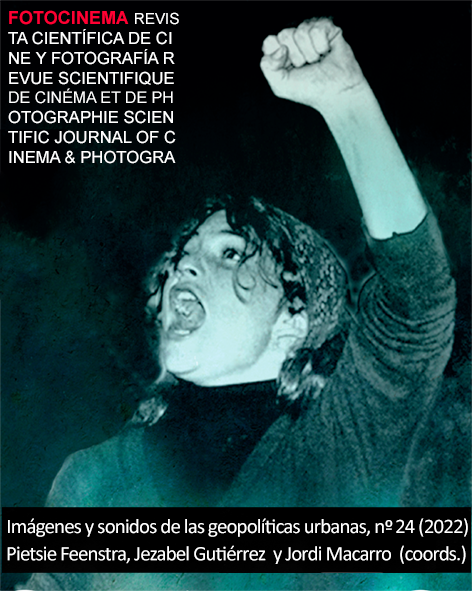The Outsiders of the Virtual City: Infrapolitics in Todd Phillips' Joker and Bong Joon-ho's Parasites
Abstract
Two of the most awarded films in 2019, Todd Philipps' Joker and Bong Joon-ho's Parasites, are about the city. Both start from a certain vision of the city as an exterior landscape to come to show the existence of an agglomeration that affects the inner life of the citizens. It shows a city where mental imbalances destabilize human relations, but also as a space of tension. Critics referred to them as two films that speak of revolt and citizen unrest, even using the concept of class struggle to define the way they show the imbalances between the powerful and the disinherited of society. This article analyses the urban tensions depicted in both films by starting from the concept of infrapolitics, understood as something that arises from the failure of all interrogation, of all ethical demands on politics. It is something that stems from the human need for self-revelation, without purpose or calculation. The subversion that both films explore does not aim to transform society but to generate a noise that serves to highlight how the new metropolises are also a space for marginalisation and mental alteration.
Downloads
Metrics
Publication Facts
Reviewer profiles N/A
Author statements
Indexed in
-
—
- Academic society
- N/A
- Publisher
- Universidad de Málaga
References
Ansay, P. & Schoonbrodt, R. (Eds.) (1998). Penser la ville. Bruselas: Aux Archives d’Architecture moderne.
Bajtin, M. (1987). La cultura popular en la Edad Media y en el Renacimiento. Madrid: Alianza Editorial.
Butler, J. (2017). Soulèvement. En G. Didi-Huberman (Ed.), Soulèvements. París: Gallimard/Jeu de Pomme, pp. 23-39.
Lévi-Strauss, C. (1955). Tristes tropiques. París: Plon.
Moreiras, A. (2020). Infrapolítica. Instrucciones al uso. Madrid: Oficinas de Arte i Ediciones.
Nancy, J.-L. (1987). Au loin, Los Angeles. En A.A.V.V., La ville inquiète. París: Collection Le temps de la reflexión. Gallimard, pp. 24-36.
O’Neil, D. (1994). Afterword, Batman. Knightfall. Nueva York: Bantam Books.
Quintana, À. (2003). Fábulas de lo visible. El cine como creador de realidades. Barcelona: Acantilado.
Schaeffer, J.-M. (1999). Pourquoi la fiction? París: Seuil.
Scott, J. C. (1990). Domination and Arts of Resistance: Hidden Transcripts. New Haven: Yale University Press.
Weiner, R. G. & Peaslee, R. M. (2015). The Joker: A Serious Study of the Clown Prince of Crime. Nueva Orleans: University Press of Mississipi.
Downloads
Published
How to Cite
Issue
Section
License
All contents published in Fotocinema Revista científica de cine y fotografía are protected under the Creative Commons Attribution-NonCommercial-ShareAlike 4.0 International (CC BY-NC-SA 4.0) license. All about this license is available in the following link: <http://creativecommons.org/licenses/by-nc-sa/4.0>
Users can copy, use, redistribute, share and exhibit publicly as long as:
- The original source and authorship of the material are cited (Journal, Publisher and URL of the work).
- It is not used for comercial purposes.
- The existence of the license and its especifications are mentioned.
There are two sets of authors’ rights: moral and property rights. Moral rights are perpetual prerogatives, unrenounceable, not-transferable, unalienable, imprescriptible and inembargable. According to authors’ rights legislation, Fotocinema. Revista científica de cine y fotografía recognizes and respects authors moral rights, as well as the ownership of property rights, which will be transferred to University of Malaga in open access. The property rights are referred to the benefits that are gained by the use or the dissemination of works. Fotocinema. Revista científica de cine y fotografía is published in an open access form and it is exclusively licenced by any means for doing or authorising distribution, dissemination, reproduction, , adaptation, translation or arrangement of works.
Authors are responsable for obtaining the necessary permission to use copyrighted images.










13.png)



